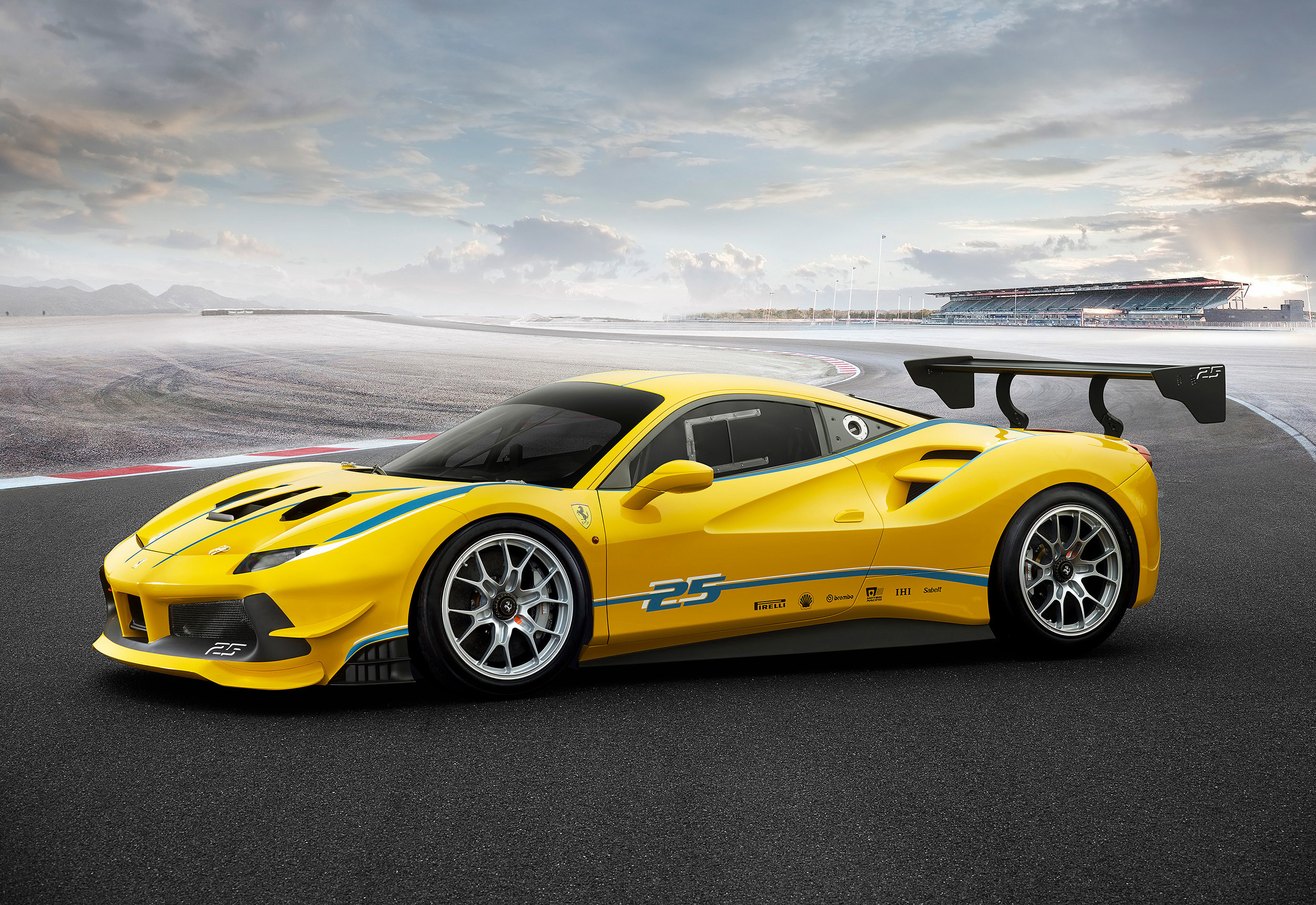
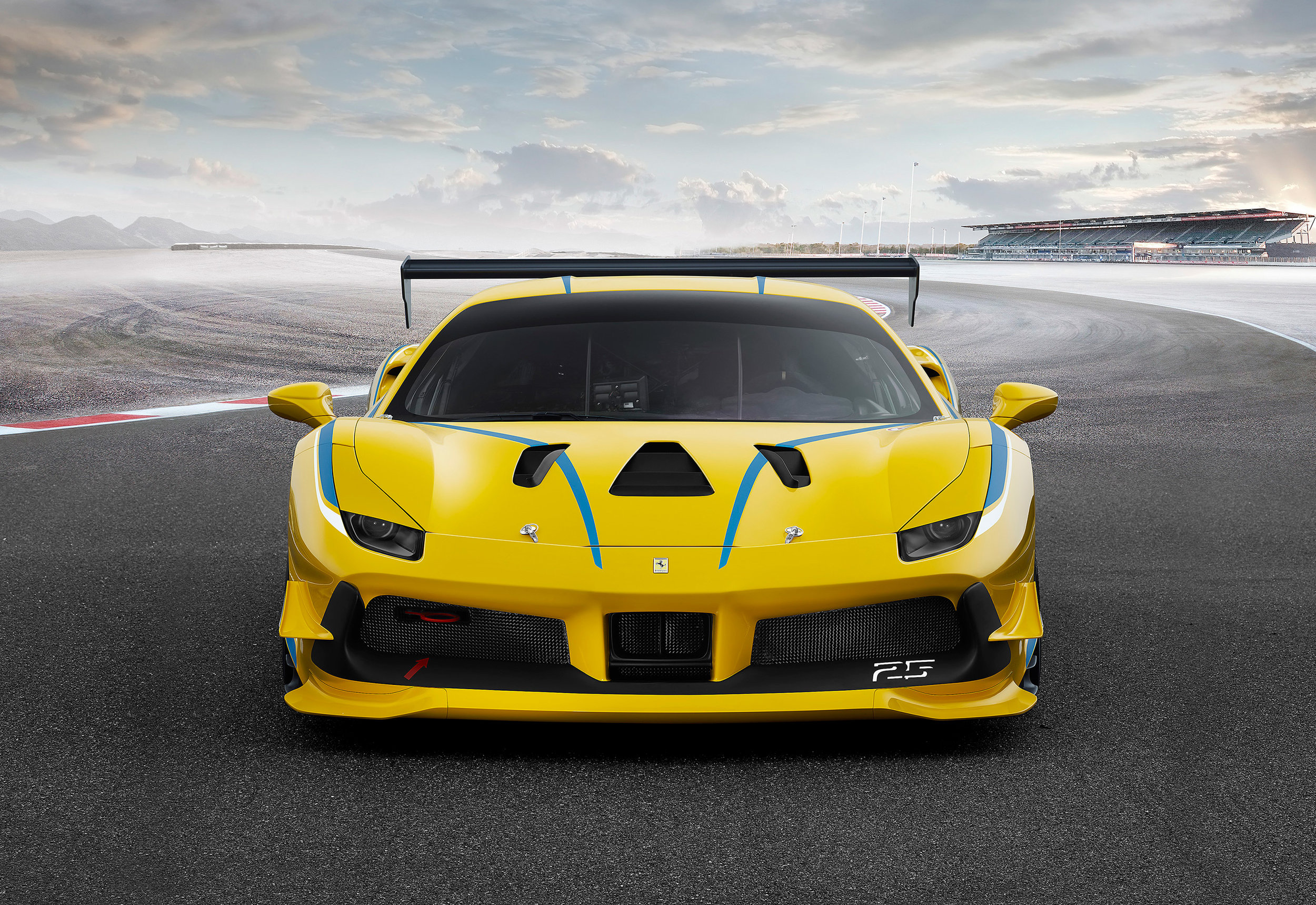
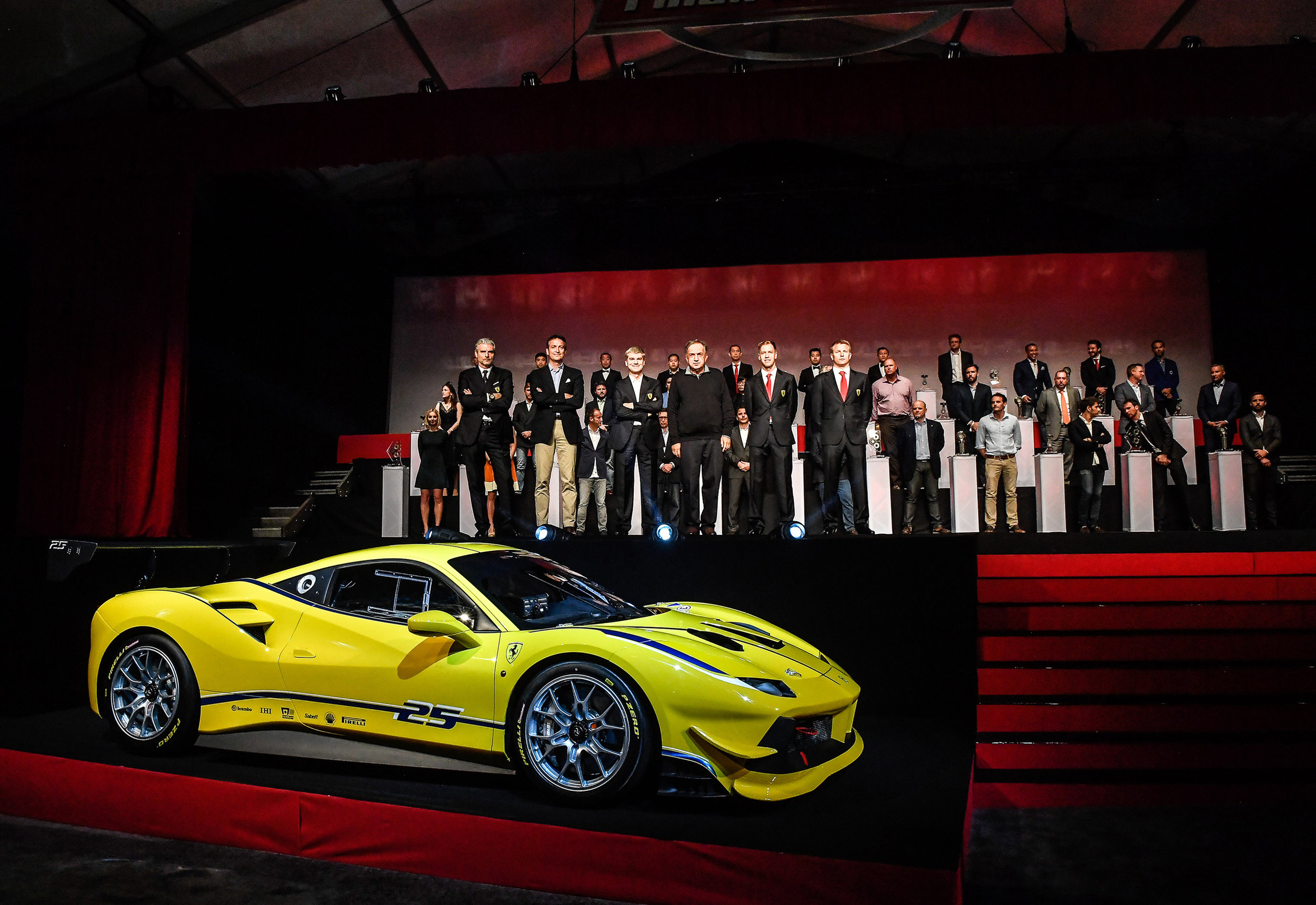
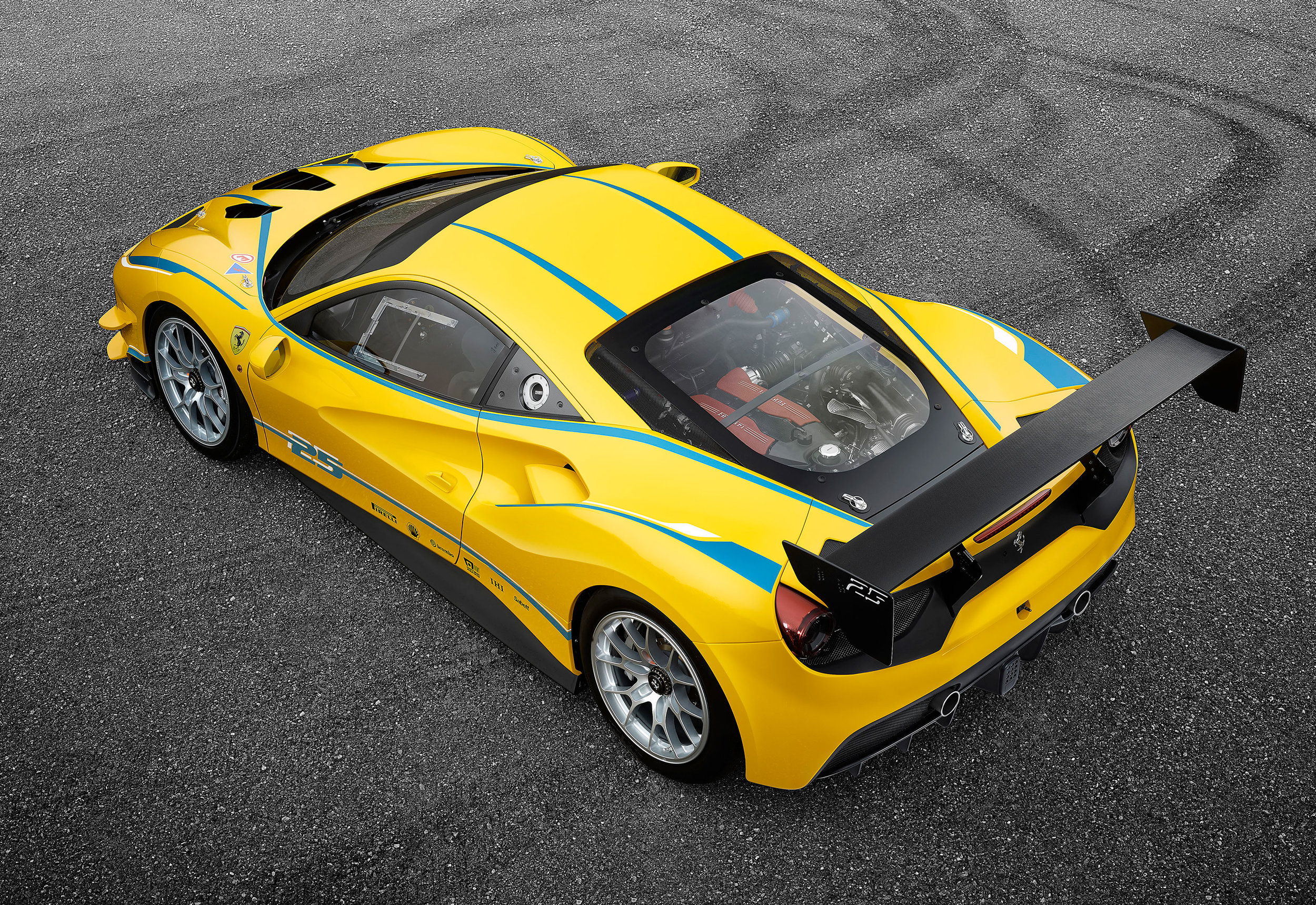
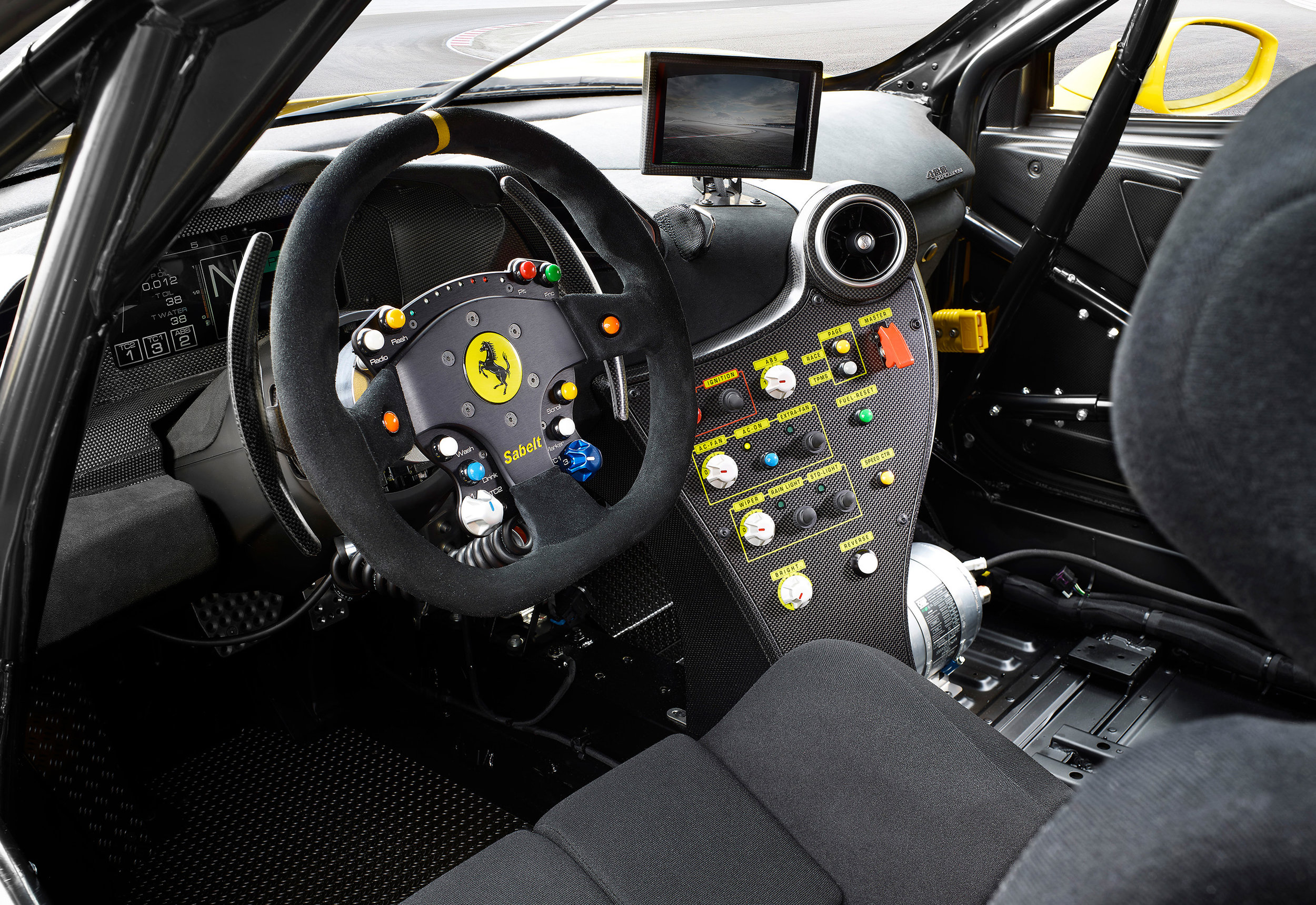
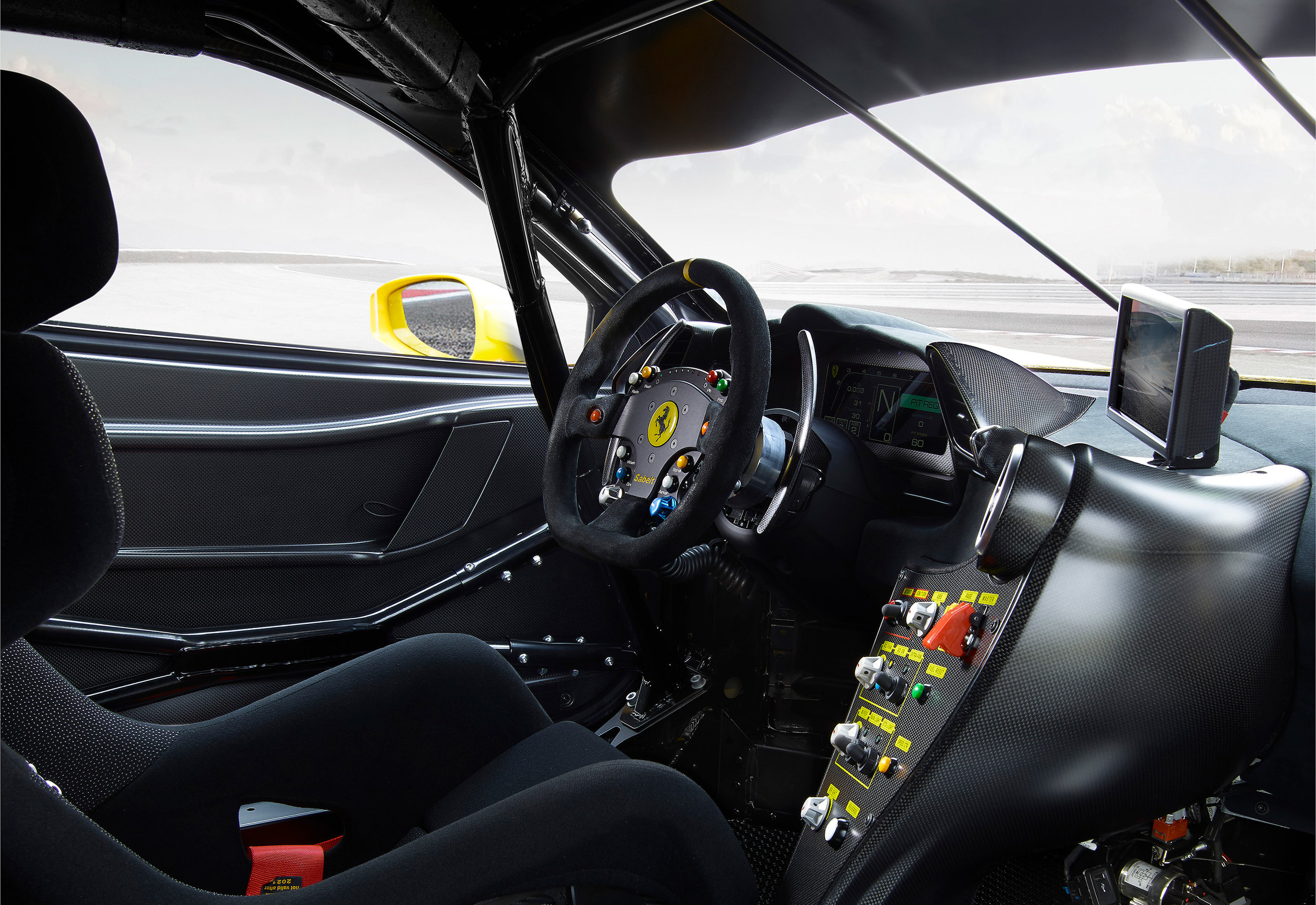
The Ferrari World Finals event in Daytona saw the unveiling of the new 488 Challenge race car.
The latest super-sports car to join Ferrari's international Challenge racing series for clients, becomes the sixth model to participate in the one-make series which, in 2017, celebrates its 25th anniversary.
The 488 Challenge is the first ever turbo-charged model and the most powerful Challenge car ever. Its 3.9-litre V8 engine pumps out 660bhp, and, with extensive development of the car’s engine, aerodynamics and chassis was able to shave a second off the Fiorano lap time of the preceding 458 Challenge EVO for a new record of 1’15.5”.
Compared to the production 488 GTB V8, the Challenge’s powertrain features specific engine mapping, optimised for racing performance, and shorter gear ratios. The variable torque management has been modified to prompt the driver to shift up at the ideal moment during longitudinal acceleration, making maximum use of the performance characteristics of the turbo engine. The F1 DCT transmission features a new racing shift strategy which enables the car to accelerate from a standstill to maximum revs in 4th gear in six seconds. Further improvements include a reduction in overall powertrain weight.
Ferrari’s Slip Slip Control (SSC) software debuts on the new model. The SSC is integrated in the vehicle electronic dynamic controls and is calibrated, along with the traction control and E-Diff3, to improve turn-in, cornering and acceleration out of corners 'ensuring that maximum traction is ensured throughout'. The vehicle control functions (traction and braking) are now governed independently via three steering wheel mounted dials or ‘manettinos’. One is dedicated just to braking, while the other two, set either side of the steering wheel, govern the traction control and electronic differential.
The most noticeable changes compared to the production car regard the aerodynamics. To achieve the technical objective of increasing the car’s aero efficiency while respecting the design, the engineers worked closely with the Ferrari Styling Centre. The front radiator layout was reworked, inverting the rake so that they are now inclined towards the rear. This solution improves the air flow over the radiators in racing conditions whilst, at the same time, reducing drag. The new layout required new vents at the bottom of the bumper ahead of the wheels.
The front bumper itself has been completely redesigned with a more pronounced splitter and flicks to increase downforce and balance the rear load, for a 7% improvement in efficiency compared to the 458 Challenge EVO.
The front bonnet is all new with triple vents and integrated flaps to direct the hot airflow from the radiators rearwards. To increase stability at high speeds, the 488 Challenge features a bigger rear wing, with an air foil profile similar to that used on the 2016 FIA World Endurance Championship-winning 488 GTE, which alone increases efficiency by 9% compared to the 458 Challenge EVO.
The intakes on the rear flanks now take cooling air to the rear brakes, optimising downforce, while the engine air intakes are now positioned laterally under the rear spoiler, taking advantage of the high pressure generated in this area.
